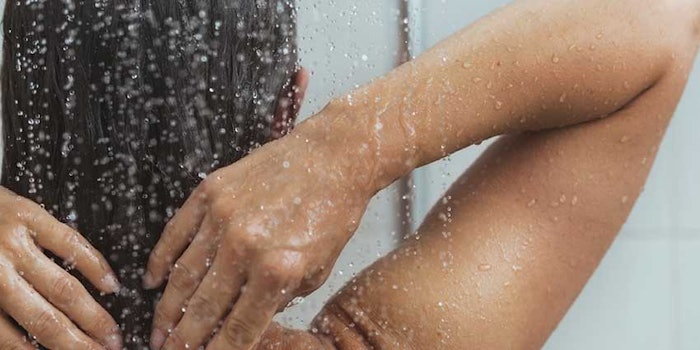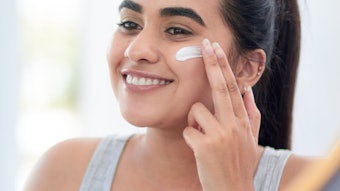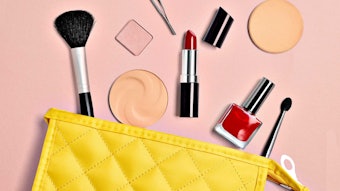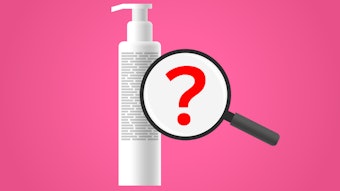
Over the last few years, our industry has become more responsive to the impact of dynamic social and economic trends, in part because more nimble brands are finding success. Busy lifestyles, less disposable income and more product options are driving consumers to be savvier with their purchases. Consumers want to see benefits faster, in fewer steps and more personalized to their needs. As a result, three areas are driving growth in our industry—purchasing options, delivery systems and formula benefits. The trend for more natural beauty and natural products are also helping to drive growth.
Traditionally, consumers have been willing to pay more for facial skin care products, particularly products that provide multiple benefits. Women want anti-aging benefits that either prevent or reverse the visible signs of aging quickly. As a result, skin care claims have become more “scientific,” justifying higher price points but also requiring more substantiation.
Most recently, hair care seems to be entering this space. Women’s attitudes about their hair are changing. Frizzy, over-processed or thinning hair can also make a woman look older. Hair care product introductions and claims are addressing these concerns.
The non-OTC bath and body sector seems to be lagging behind. This begs a few questions. First, is the average consumer more concerned about their body above the shoulders as it relates to grooming? Second, does the average consumer sacrifice their spending on body products so they can spend more on skin and hair care? Third, is the consumer unwilling to spend more on bath and body because of a perception that there is little difference between products, despite the price point? Lastly, is industry unwilling to spend the money on innovation for a category that has lower price points or perceived minimal differentiation between price points?
Innovation and Differentiation
While bath and body products can be purchased over the Internet, directly from the brand or via mobile apps, we are not seeing the same level of innovation in delivery systems and formula benefits. Even within these purchasing options, websites do not always provide bath and body care by need or benefit, with the exception of cellulite/stretch marks. Instead, bath and body care is typically offered for sale by product type.
Most bath and body products are still being sold in jars, tubes and bottles as creams or lotions, balms, bars and oils. Benefits such as in-shower moisturization, exfoliation, self-tanning, 24-hr to 48-hr moisturization, firming and cellulite reduction are still the primary body claims for most products, regardless of price point. With the exception of moisturization, claims support is largely based on the use of specific ingredients in the formula such as natural butters and oils. As a result, regulatory agencies have largely ignored bath and body claims with the exception of cellulite reduction and stretch marks. Despite this category flying under the radar, we are not seeing any real differentiation in product claims.
While bath and body products can be purchased directly from the brand over the Internet, we are not seeing the same level of innovation.
Truth in Claims
Many brands have looked to free-of claims for differentiation, but even this is no longer unique and now is in jeopardy. The EU is expected to pass a final version of the Guidelines to Commission Regulation, (EU) No. 655/2013, the common criteria for the justification of claims. This regulation lays out the rules for claims under six criteria: legal compliance, truthfulness, evidential support, honesty, fairness and informed decision-making.
According to the legal compliance criteria of the regulation, “claims that convey the idea that a product has a specific benefit when the benefit is mere compliance with the minimum legal requirements will not be permitted.” Included in this category will be claims such as hydroquinone-free and not tested on animals.
The truthfulness and evidential support criteria may have the biggest impact to the bath and body category. Under truthfulness, “(i)ngredient claims referring to the properties of a specific ingredient shall not imply that the finished product has the same properties when it does not.” The example provided by the regulation is one that is most often used in this category, “(t)he claim ‘contains moisturising aloe vera’ or prominently picturing aloe vera shall not be made if the product itself has no moisturising effect.” In other words, just because a product contains aloe vera does not necessarily mean that the formula moisturizes, and support must be provided.
This is also addressed in the evidential support criterion, which states: “(a) claim extrapolating (explicitly or implicitly) ingredient properties to the finished product shall be supported by adequate and verifiable evidence, such as by demonstrating the presence of the ingredient at an effective concentration.” If moisturization is claimed on a body butter, some form of testing must be conducted to support this claim. No longer can “fairy dust” levels of ingredients be used to imply efficacy. The regulation also says, “(p)resentations of a product’s performance shall not go beyond the available supporting evidence,” in the honesty criterion.
Another element of the truthfulness criterion is, “(n)either the general presentation of the cosmetic product nor individual claims made for the product shall be based on false or irrelevant information.” A good example is sulfate-free. If sulfates are not typically used in a specific formula type, such as a body oil, then the claim sulfate-free would be considered to fail the truthfulness criterion because it is irrelevant.
Once Guidelines to Commission Regulation 655/2013 is finalized and enforced, several free-of claims will likely need to be removed from packaging and product marketing. This could put many brands—particularly smaller ones—that have global packaging at a disadvantage to those that produce regional packaging, particularly in areas where this regulation is not in effect.
What’s Next
So what is next for this category? Will we see more natural/organic bath and body products? Brands will need to be careful in supporting these claims. For example, Canada requires the product to meet a recognized standard for organic certification in order to claim it is organic. Korea has a list of approved processes, banned ingredients and percentage requirements (see Cosmetics & Toiletries May 2015 column). Brands will need to conduct due diligence on the various organic and natural standards to employ, and must ensure they have the data to meet the stringent requirements.
Perhaps bath and body care will go the way of hair and skin care with more scientific claims. One thing is for sure: brands will need to find new ways to differentiate bath and body products, to get consumers to focus on parts below the shoulders.










